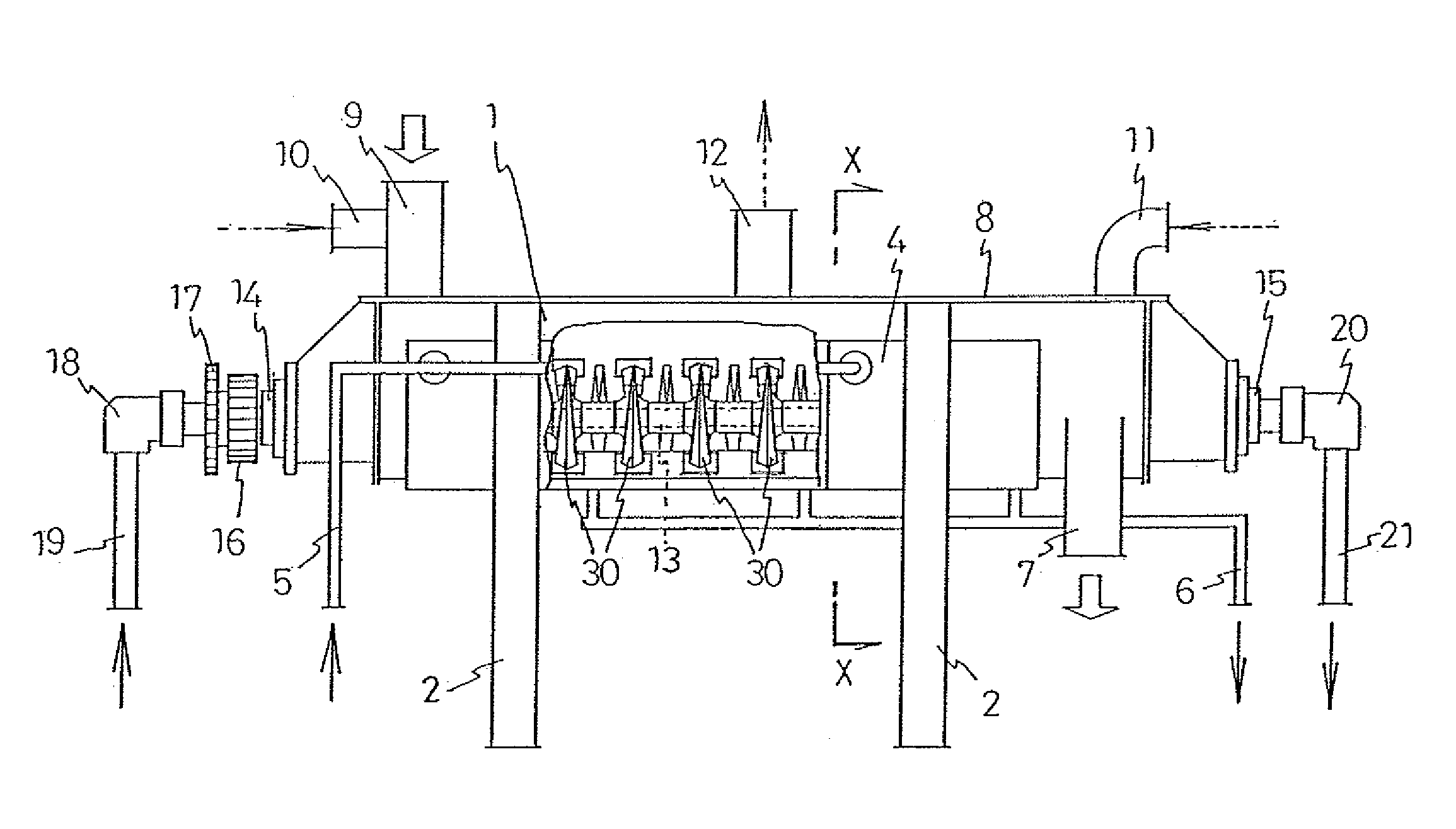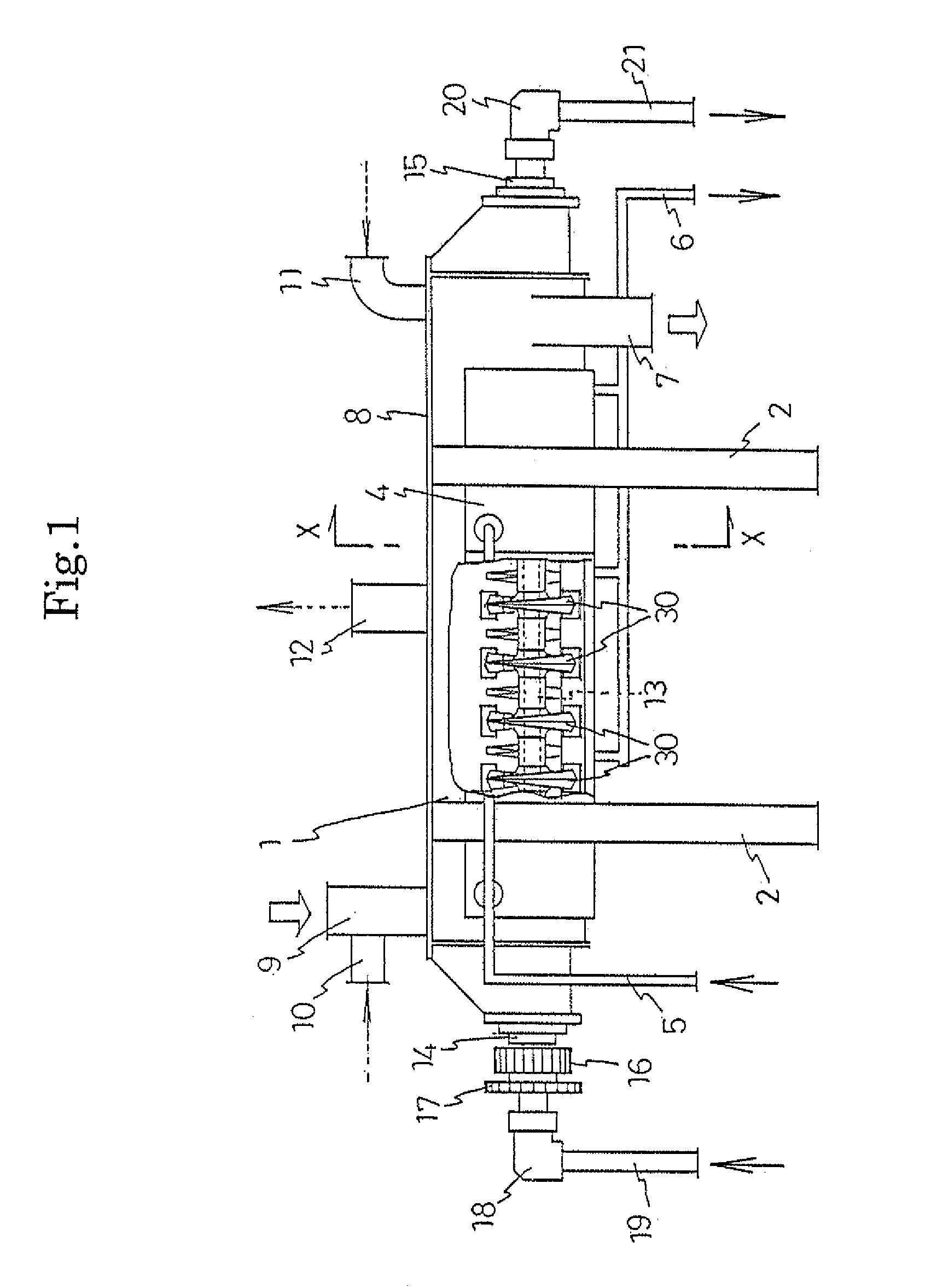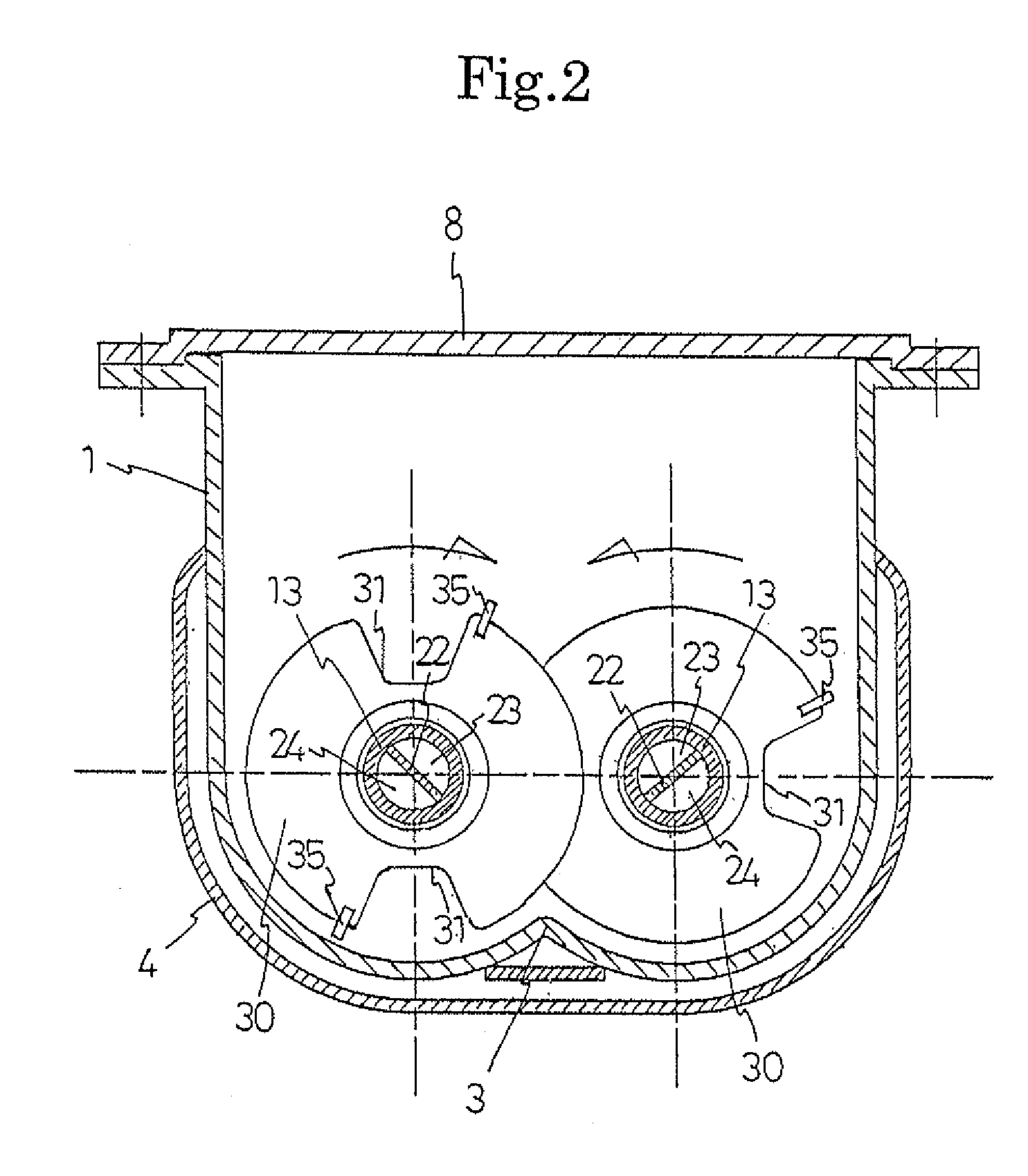[0014](a) The object to be processed adheres / accumulates in the angled parts other than the
diagonal plate surface of the wedge of the heat exchanger, particularly in a section where the shaft and the wedge-shaped heat exchanger are attached. Adhesion / accumulation of the object to be processed reduces the heat-transfer area of the heat exchanger, lowering the heat efficiency of the device. Moreover, the adhered / accumulated object to be processed falls off of the heat exchanger as time advances, causing, in some cases or according to the heat history, different types of block objects to be mixed into the object to be processed.
[0018]The present invention was contrived in view of the above-described problems of the background art. An object of the present invention is to provide a heat exchange device for a powder and granular material, which is capable of suppressing an object to be processed from adhering / accumulating, while keeping
high heat efficiency, piston flowability and other advantages of the conventional device that uses the wedge-shaped hollow rotating bodies, and reducing the man-hour of manufacturing processes (time). The present invention also aims to provide a method for manufacturing such heat exchange device.
[0023]According to the heat exchange device for powder and granular material according to the present invention, each of the heat exchangers disposed on the shaft has a cutout recess part directed from a circumferential edge of the heat exchanger toward a center of the same, and plate surfaces extending from one side edge of the cutout recess part to another side edge of a following cutout recess part are formed into a wedge-shaped plate surface where the thickness of the plate surfaces increases gradually. Therefore, according to this heat exchange device, the gap between the wedge-shaped plate surfaces of two adjacent heat exchangers becomes gradually narrow from one side edge of the heat exchanger to the other side edge, and the heat exchanger cuts into a layer of an object to be processed as the shaft rotates. As a result, a compression force can be gradually acted on the layer of the object to be processed in the narrowing gap between the wedge-shaped plate surface, and the compression force can be released at once by the cutout recess part. Thus, the powder and granular material layer, which is the object to be processed, can be compressed and expanded repeatedly by the rotation of the shaft, whereby the powder and granular material can be heated or cooled efficiently. In other words, compressing the powder and granular material layer between the gradually narrowing wedge-shaped plate surfaces means compressing an internal
air layer. Thus, lowering of a heat insulation effect and enhancement of
heat transfer can be realized. On the other hand, the powder and granular material layer is released from the compression and expands at the cutout recess part located at a terminal end of the wedge-shaped plate surfaces, and consequently vaporized materials and the like contained in the gap between the powder and granular material can be emitted to the outside the
system. Such a device of the present invention is capable of exerting the effect of repeatedly compressing and expanding the powder and granular material layer, to achieve
high heat efficiency. Each of the heat exchangers used in the present invention has the cutout recess part directed from the circumferential edge of the heat exchanger toward the center of the same, as described above. Therefore, the heat exchange device can allow the passage of the object to be processed from the cutout recess part of the heat exchanger, ensuring the piston flowability of the object to be processed.
[0024]In addition, according to the heat exchange device for a powder and granular material according to the present invention, the projection that smoothly bulges in the horizontal direction as viewed from the side is formed at the central part of each heat exchanger, the tip end of the projection is formed into an opening, and the heat exchanger and the shaft are fixed by inserting the shaft into the opening. According to this heat exchange device, the section where the heat exchanger and the shaft are attached forms a smooth curved surface that does not allow the adhesion / accumulation of the object to be processed. As a result, the heat exchanger and the shaft can ensure a wide heat-transfer area, to realize the device having high heat efficiency. Moreover, the adherence or accumulation of the object to be processed is prevented, hence the falling off thereof and the mixing thereof into block objects do not occur, namely a highly reliable heat exchange operation for a powder and granular material can be realized.
[0025]In the heat exchange device for a powder and granular material according to the present invention, the entire configuration of each heat exchanger is in the shape of a substantially simple hollow disk. This allows the heat exchange device to reduce the man-hour of manufacturing processes (time) significantly in order to achieve easy
automation of the welding operation.
[0026]According to the method for manufacturing the above-described heat exchange device for a powder and granular material according to the present invention, when fabricating each of the heat exchangers it is only necessary to perform only one welding operation on the
peripheral edge part thereof where the two pieces of press-formed members abut on each other (there is only one
weld line). Thus, the welding operation can be performed in a short time, facilitating the
automation of the welding operation. When fixing each heat exchanger to the shaft, it is only necessary to insert the shaft into the opening formed in the heat exchanger, and to weld the heat exchanger to the shaft at the opening
peripheral edge. This leads to a simple welding operation and a significant reduction of the welding time. In this case as well, since only one
weld line is formed, the automation can be realized incredibly easily.
 Login to View More
Login to View More 


